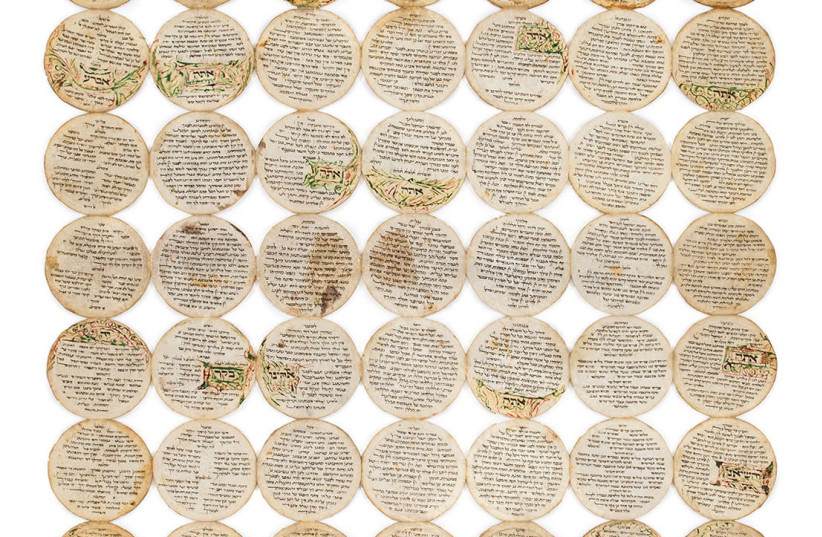A 15th-century manuscript from Italy – the smallest known one of its kind in Hebrew – is going to be auctioned off in Jerusalem this Tuesday.
The manuscript was constructed from a single piece of parchment which was cut into roundels at 5.5 centimeters in diameter alone.
"We know of only two other similar Hebrew manuscripts, and we can say neither comes close to the size and magnificence of this manuscript," said Kedem Auction House founder and co-CEO Meron Eren. "It is the most unique we've ever seen."
Within the pages are a machzor – a Jewish festival prayer book for the Jewish holidays. However, as it is particularly tiny, the manuscript contains an abridged version with selected sections rather than the full text.
It contains a complete Passover Hagaddah from Italian tradition, as well as piyuttim (liturgical poems). It has 98 pages altogether.

It is covered in artwork, too; its pages are decorated with gentle foliage in green, pink and burgundy, alongside an illustration of an angel blowing a shofar.
The Haggadah section contains illustrations of the Four Brothers from the famed Passover tale of the same name, as well as the many special foods of the holiday.
Not many religious texts are as unique as this one. Christianity has the Codex Rotundus, a 226-page Book of Hours from the 15th century. It, too, is circular. There are also miniature cut-outs of the Quran produced in Iran and Turkey in the 1500s and 1600s.
The manuscript, previously kept by a private collector for 40 years, is currently being held by University Archives, an auction house in Connecticut, from which it will be flown to Jerusalem for its auction.
